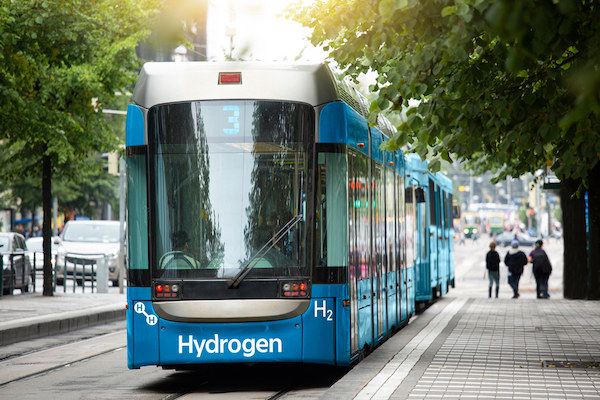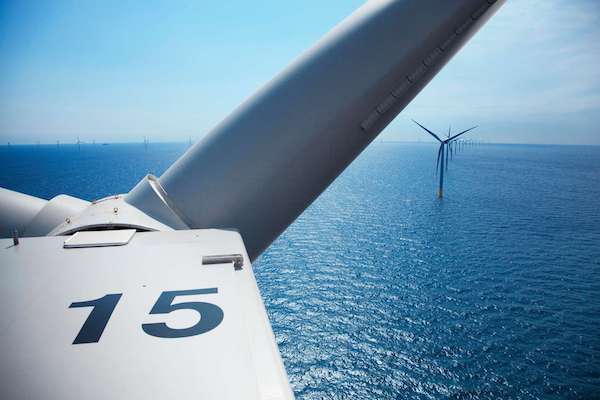
From a somewhat niche technology only a few years ago, green hydrogen — produced using renewable energy — has rocketed into the global decarbonization mainstream as a "new solution" to displace carbon emissions from some of the toughest sectors to abate.
Green hydrogen still has a long journey to become a key player in reducing global climate emissions — but with a growing pipeline of projects and significant policy targets announced around the globe, this technology is quickly approaching an inflection point.
Fossil foundations
Today, hydrogen is used primarily by heavy industry. Globally, about 115 megatons (Mt) of hydrogen are used each year, mostly in oil refineries, for production of ammonia and methanol, and for other chemical and industrial processes.
Modern day demand is almost exclusively met with hydrogen produced by "cracking" fossil fuels at a molecular level, yielding hydrogen — and lots of carbon (CO2). Of the about 70Mt of dedicated hydrogen production in the world today, 70 percent is produced from steam methane reforming natural gas, or "grey hydrogen," emitting an additional 9 kg of CO2 per kg of hydrogen produced. Even worse, around 27 percent is produced from gasification of coal, emitting 19 kg of CO2 per kg of hydrogen. All told, hydrogen use today makes up about 2 percent of global carbon emissions.
Renewable redemption
Fortunately, electrolysis — using renewable electricity to split water into hydrogen and oxygen — offers an alternative path to produce hydrogen with no greenhouse gases emitted. The industry has dubbed this "green hydrogen." As costs of wind and solar generation have decreased over the past decade to the point where renewable energy is more affordable than power generated from coal, gas or nuclear, green hydrogen is quickly emerging as a key component in a truly decarbonized economy and world.
Wind turbines at Hornsea One, the world’s largest offshore wind farm. Image courtesy of Ørsted.
Flexibility in ramping up and down, responding to the variable output of wind and solar energy, means that hydrogen production can help balance supply and demand in the power grid, and reduce investment needs in grid expansion. This is a cost-effective technique, as molecules in pipelines are generally cheaper to move than electrons in power lines.
But hydrogen doesn’t just complement renewable energy expansion; it will also help displace fossil oil and gas with green fuels.
‘X’ marks the spot
Hydrogen is a potent energy carrier. Burning a kilogram of hydrogen releases 33kWh of energy — two orders of magnitude more than the energy content of a 1kg lithium-ion battery. This makes hydrogen well suited for high-temperature industrial processes that today rely on coal or natural gas. And it enables decarbonization of heavy transport applications, where the energy requirement is so large that direct electrification (using batteries) becomes impractical. For instance, it is difficult to use batteries in deep-sea shipping, aviation and long-haul trucking.
Power-to-X – essentially "turning electricity into something else" — is the umbrella term for both hydrogen electrolysis and a series of steps that can be added. For instance, when renewable hydrogen is combined with carbon, it can produce methanol, which in turn can be refined into other hydrocarbons. Or when combined with nitrogen — readily available as it constitutes about 80 percent of our atmosphere — it can be turned into ammonia, both a key component of fertilizers and potentially a carbon-free shipping fuel.

Refuelling operation of passenger aircraft. Image courtesy of Shutterstock.
Reasonable decarbonization scenarios suggest that global hydrogen demand will increase by fourfold to sevenfold to 500 to 800Mt per year by 2050 to decarbonize heavy transport and other industries. Estimates indicate that in a net-zero scenario, hydrogen and e-fuels will make up around one quarter of global energy consumption by 2050.
Concerted efforts to bring down the cost
Hydrogen from renewable energy comes at a two- to three-times cost premium over "grey" hydrogen. But this is evolving, quickly. A wave of regulatory incentives, policy targets and bold industry ambitions are sweeping the world, working in concordance to establish supply chains and achieve economies of scale to cost-down the technology.
In the U.S., the Infrastructure Act of 2021 dedicated $9.5 billion for research in clean hydrogen, aimed at reducing costs to $2 per kilogram. And tax credits for clean hydrogen are under consideration in Congress. In Europe, national governments are racing to put new and bolder targets in place, and the EU has a collective ambition to supply 20Mt renewable hydrogen per year from 2030 (including half from domestic production), made using 80GW of electrolyzer capacity.
Responding to these political ambitions, and in acknowledgement of the global megatrends pushing decarbonization, companies are making new, bolder and aggressive pledges to offtake clean green fuels. This helps create certainty for investments, developers and technology providers to build out the industry.